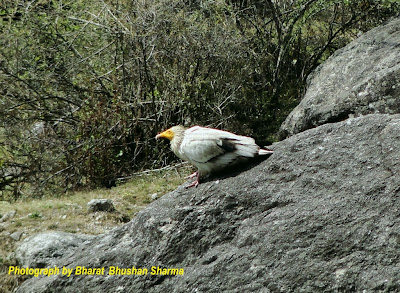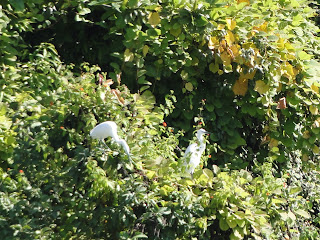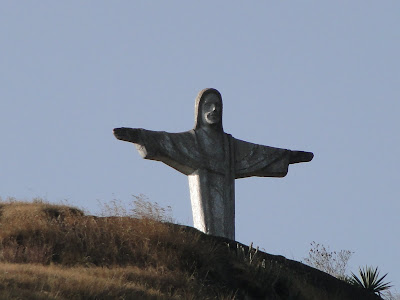Nekhbet at Himalayas

For me, Egyptian stands for mysterious. I don't mean that Egyptians look like aliens. I have never visited Egypt and the very first image which come in my mind with term Egypt is Nile river civilization and the huge pyramids. So over the course of time I have developed an enigmatic Image for Egypt and its culture.
So when I heard about the Egyptian Vulture for the very first time, I thought about it as an enigmatic species. It felt like it had witnessed the growth and decline of civilization or had to do something with it. But I never knew that it really had a connection with Egyptian civilization. In ancient Egyptian mythology, there was a Goddess named "Nekhbet" whose totemic form was Egyptian white vulture. It was considered to be existed only as female as there is no sexual dimorphism. They were supposed to reproduce by parthenogenesis. Nekhbet was responsible for motherhood, queenship, wild birds, life creator, death and rebirth.
I had seen Vultures many times during my childhood. I heard some stories about them too. In Indian mythology, there is description of "Jatayu" and "Sampati", two vulture brothers who helped Lord Rama during forest exile. But I think that most of people are not having a very good image for vultures. As a child, I used to think that they were very dangerous. I heard from friends that vulture chicks born blind and their parents borrow them eyes from other dead animals including humans. So if you are resting on ground, vultures would think you as dead and would come to take away your eyes. If vultures were flying in kettle surely there was a dead body somewhere on ground. They appeared very unpleasant with bald head to neck and hooked beak. I used to think them as always hungry and offensive birds who always look around for dead bodies. I used to think them as not less than cruel killers.
A long time has passed. Now vultures are very very rare. I don't remember to have seen them for more than past a decade in wild. As a child I used to think them as a single species. But now I know that vulture is a group which is represented by several species. Two vulture groups are known, "New world vultures", found in Americas and "Old world vultures", found in Europe, Africa and Asia. These two groups are not closely related but they have a close morphological similarities due to convergent evolution. So there are many species of vultures but I haven't seen any of them in wild from a very long time. People say that their population has declined a lot. After being a part of Wildlife Institute of India, I came to know about the main reason of decline. Declofenac is an anti-inflammatory, veterinary drug which is given to ill farm animals to reduce their pain so that they could work for longer. When the animal dies, drug remains there in carcass. When vultures feed on them, they get effected by Declofenac poisoning and die. In India, over the past decade a huge decline has been reported among vultures, including Egyptian vulture. Now the drug has been banned by the Govt. of India and many efforts are being taken to rescue the vultures.

Few months before , I got a chance to see Egyptian vulture in Wild. It was purely a coincidence. It was 16 Mach. I was at Institute of Himalayan Bio-resource Technology at Himachal Pradesh, India, where my cousin brother works as a researcher. After seeing some experiments in his lab, I decided to go out, more closer to Dhauladhar range of Himalayas. I always have been in love with Mountains. They provide peace and an opportunity to interact with real me & almighty and forget all the worldly matters. Like many previous journey, this one was an unplanned too. Only thing I knew I was heading more towards Mountains. I photographed everything which was beautiful, unique, new or attractive either living or non-living. Some notable species I saw were Rhododendron, White-capped water Redstart, Blue whistling thrush. I was walking parallel to a water stream. I passed through two small villages. On the way I had an interaction with an old man and I asked him about life and culture. He told me that the way I was heading would take me towards an army station. So I decided to go at least upto army station. I continued my journey. From a distance of about 1 Km, I saw a flying bird, large and white colored. It was looking very prominent as there was no other bird of that size. Because the terrain was hilly, it was difficult to see other small or large birds flying in open space. I tried to photograph that but hilly terrain was not allowing it to be visible for sufficient time. I increased my pace in hope to get an opportunity to see that bird closely. After around 20 minutes , I was in a concave depression, on left side of which was a divine water stream and on front and right side a very large mountainous slopes . In between there was an open space. I meticulously look around for that white colored bird. Suddenly the bird appeared from backside of a boulder. It was amazing. There was an absolute sense of freedom. It was flying like a king. There were no restrictions. The bird was the owner of whole world. It was beautiful. I took some shots but none was good one. Then bird sat on a large boulder, across the stream. I got a good chance to take some good pics. I zoomed in some pics and found that the bird was unique. It had a semi-bald yellow head and hooked beak. I was sure it was a vulture but had no idea about species. It was not unpleasant at all but beautiful indeed. Beak was light pinkish at the tip. It was white colored with black flight feathers which appear clearly during flight. I did not miss nay chance to take a video, covering beautiful terrain and the bird. Later I identified that as an Egyptian vulture from a photographic guide. I was really a lucky person to see that bird for about 20 minutes in that area. It was just like a surprise for me.

From that day onward I studied about vultures. I don't see them dangerous or ugly any more. In fact they are facing a danger of extinction. Egyptian Vulture is the only member of genus Neophron and its scientific name is Neophron percnopterus. I found that the bird was in Endangered category. There are reports of very rapid population decline in India mainly because of Declofenac. It was evident from the fact that few years back it was in "Least concern" category and today it is in "Endangered" category. It is estimated that now only few 1000 pairs are left in India. As a conservation action Diclofenac has been banned by the Indian government and many monitoring programs are are being conducted. The bird is facing problems not only in India but all around the range of its distribution. We humans, who have most developed brain have put many species in trouble because of selfishness. We have taken a lot from the nature but have not given back that much. The environment is changing at a very rapid rate due to our anti-environmental activities. And the cost is being given by many other living forms. The Nekhbet who was once considered the Goddess of life, now facing the danger of death. If we fail to save other species, we will go closer for our turn to come. One day the problem will be on us. I believe that if we are saving other lives, ultimately we are saving our existence. Nekhbet had served the development of a civization thousands of years before, And now its our turn to help her to survive long.


Comments
Post a Comment